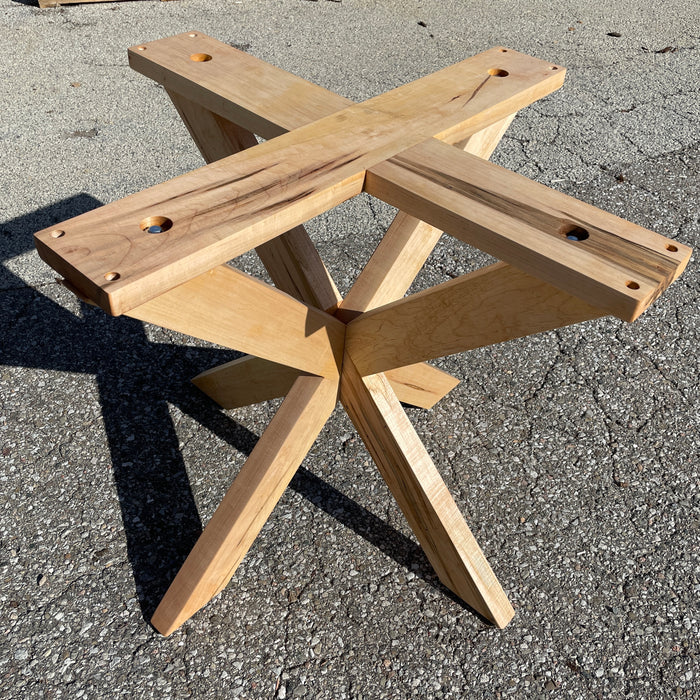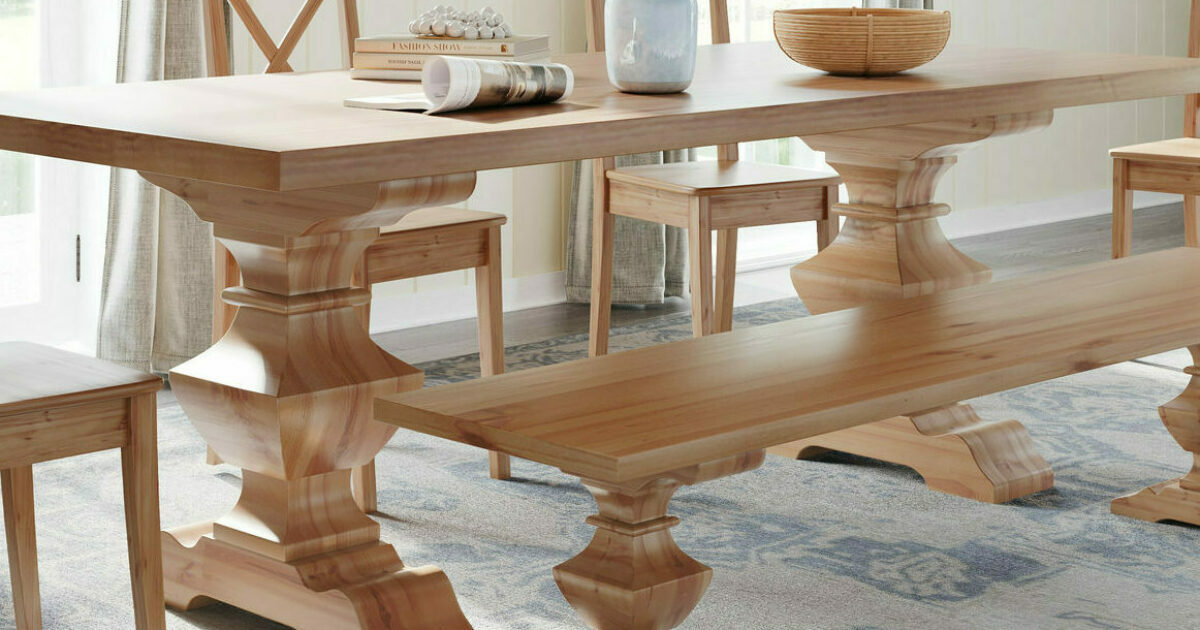Bring Warmth and Character to Your Area with Dining Table Legs Wood
Key Variables to Bear In Mind for Table Legs Timber Choices
When choosing timber for eating table legs, several vital variables require careful consideration to make sure both capability and visual charm. The choice of timber kind, characterized by its sturdiness and one-of-a-kind grain patterns, plays a pivotal role in the general style and long life of the piece.
Wood Kind and Qualities
When selecting wood for eating table legs, it is important to recognize the unique attributes of various timber types. Various timbers provide distinctive benefits and disadvantages, affecting both the resilience and aesthetic allure of the completed item.
Hardwoods, such as cherry, oak, and maple, are generally chosen for their strength and resistance to put on. Oak, understood for its impressive resilience, also includes a famous grain that can add character to the table. Maple uses a smooth surface area and is less vulnerable to warping, making it a reliable option for practical furnishings. Cherry timber, with its rich color that strengthens with time, gives an extravagant appearance however might require more maintenance to avoid scratches.
On the various other hand, softwoods like pine and fir are more economical and simpler to function with, yet they are much less long lasting than hardwoods. Pine is light-weight and features a cozy, rustic appearance, making it a popular option for laid-back eating setups. Nevertheless, it is much more vulnerable to dents and scratches.
Understanding these attributes will help in making a notified choice to ensure the legs of the dining table satisfy both aesthetic and useful needs.
Grain Patterns and Aesthetic Appeal
The timber's grain is not merely an aesthetic attribute; it imparts an one-of-a-kind character and beauty to each item. Different timber varieties display distinctive grain patterns, varying from the straight lines of maple to the detailed swirls of oak and the striking number of walnut.
Additionally, the orientation and scale of the grain can influence the regarded size and sophistication of the table. For example, bigger, more noticable grains may lend a strong, remarkable impact, while finer, subtler grains can produce an improved, understated appearance. In addition, the ending up process can even more enhance these patterns, stressing the natural appeal of the wood and bringing out abundant hues.
Inevitably, the choice of grain pattern need to integrate with other style elements, such as the tabletop and surrounding furnishings, guaranteeing a natural visual that elevates the dining experience. Thoughtful selection of wood grain not only adds to the table's appeal but also mirrors the proprietor's preference and design.
Toughness and Strength
The longevity and stamina of dining table legs are vital factors to consider for ensuring longevity and security in any kind of dining room. Selecting the ideal timber is crucial, as various species show varying degrees of durability.

Inevitably, spending in high-quality wood and robust construction methods will certainly produce a dining table that stands the examination of time, while offering a reliable foundation for plenty of meals shared among household and close friends. Focusing on toughness and stamina ensures that your dining table stays functional and cosmetically pleasing for many years ahead.
Maintenance and Treatment
Correct upkeep and care are vital for maintaining the resilience and stamina of table legs made from timber. Regular cleaning is important; utilizing a soft, damp fabric guarantees that dust and particles do not collect, which can cause scratches and monotony. It is a good idea to stay clear of severe chemicals or unpleasant products that could harm the finish.
Additionally, using a suitable timber gloss or wax occasionally can assist keep the sheen and shield the wood from dampness and spills. It is vital to follow the maker's recommendations regarding the kind of product to utilize, as specific finishes may react negatively to particular chemicals.
Humidity and temperature you can look here level changes can also impact wooden table legs, triggering them to warp or fracture. It's finest to position the table away from direct sunlight and warm sources. Attending to these immediately can stop additional damage. if the table legs have any kind of scratches or damages.
Finally, regularly checking the joints and screws for tightness is very important to keep architectural honesty (Dining Table Legs Wood). By adhering to these upkeep techniques, property owners can guarantee their wooden table legs stay attractive and practical for years ahead
Environmental Factors To Consider
When choosing timber for eating table legs, it's necessary to take ecological factors to consider right into account. The sourcing and sustainability of wood are critical in reducing environmental effect. Going with timber from qualified sources, such as those supported by the Forest Stewardship Council (FSC), guarantees that the lumber is harvested sensibly, promoting forest preservation and biodiversity.

In addition, local sourcing of timber minimizes transportation emissions, sustaining neighborhood economic situations while reducing environmental impact. It is additionally suggested to be familiar with the wood's treatment and ending up procedures, as certain chemicals can be unsafe to both human wellness and the setting. By prioritizing sustainable wood choices, customers can add to environmental conservation while delighting in the durability and charm of their table legs.
Conclusion
In verdict, choosing timber for dining table legs requires careful factor to consider Get the facts of various elements, including timber kinds, grain patterns, and resilience. Maintenance demands and ecological sustainability further influence wood selections, highlighting the importance of sourcing from licensed or redeemed products.
When selecting wood for eating table legs, several vital aspects necessitate careful factor to consider to make certain both functionality and visual allure.Appropriate maintenance and treatment are essential for preserving the sturdiness and strength of eating table legs made from timber.When picking timber for dining table legs, it's essential to take ecological considerations right into account. By prioritizing lasting wood choices, customers can contribute to ecological preservation while taking pleasure in the longevity and beauty of their eating table legs.
In final thought, selecting timber for dining table legs demands cautious factor to consider of numerous factors, including timber kinds, grain patterns, and sturdiness. Dining Table Legs Wood.